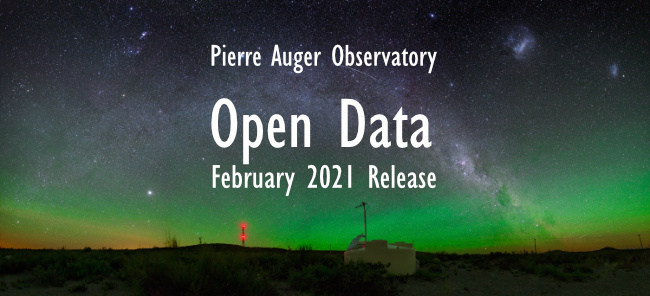The most energetic particles in the world within public reach
"The Pierre Auger Collaboration has just made public 10% of its data, collected using the largest cosmic ray detector in the world, thus reinforcing in practice its commitment to the Open Science paradigm "

These data is accessible to all those who, with different objectives, can benefit from its use: not only to the scientific community in several related areas, from particle physics to astronomy, and to advanced training in any part of the world, but also to all those who want to use them in the context of educational or scientific dissemination projects, as well as in citizen science projects.
In this way, the Collaboration reinforces in practice its commitment to the Open Science paradigm in its various components: from open access to scientific results to open data and open codes, also promoting the creation of open science and technology networks. of citizen science. The aim is to increase the number and diversity of people with effective access to science, thereby increasing the potential for global development.
The data collected by the Pierre Auger Observatory have allowed to unveil some of the enigmas that surround the most energetic cosmic particles sometimes detected, with energies that can exceed 1020 eV (which corresponds to the macroscopic energy of 16 joules). These particles are predominantly nuclei of atoms of different elements (from hydrogen to silicon) and arrive from astrophysical sources outside our galaxy.
This is, therefore, one more channel for observing the Universe, in this case by means of particles, which joins astronomy based on electromagnetic radiation of a diversity of wavelengths, from X rays to radio waves passing through visible light. All together, these observation channels constitute the so-called multi-messenger astronomy, in which great advances have been made in recent years. It is hoped that the data from the Pierre Auger Observatory will, despite their relative complexity, capture the attention of a part of the community of amateur astronomers, in Portugal as in other countries, developing in their use an important citizen science component.
When a very high-energy cosmic particle reaches the atmosphere it causes a shower of millions of particles. The detectors of the Pierre Auger Observatory observe the showers of particles that reach an area of 3000 km2 in the Argentinian pampa, reconstructing from the collected information the characteristics of the initial particle.
The Observatory's data include the “raw” data directly collected by the instruments and data already processed by reconstruction and analysis programs with different levels of complexity. The data now shared include all the different levels, in order to allow for their use for a variety of purposes. Programs are also available to analyze the data, as well as all associated documentation.
Ralph Engel, spokesperson of the Collaboration, stressed that "the data from the Pierre Auger Observatory, which was founded more than 20 years ago, are the result of a vast and long-term scientific, human, and financial investment by a large international collaboration. They are of outstanding value to the worldwide scientific community". The data now released can be found in:



